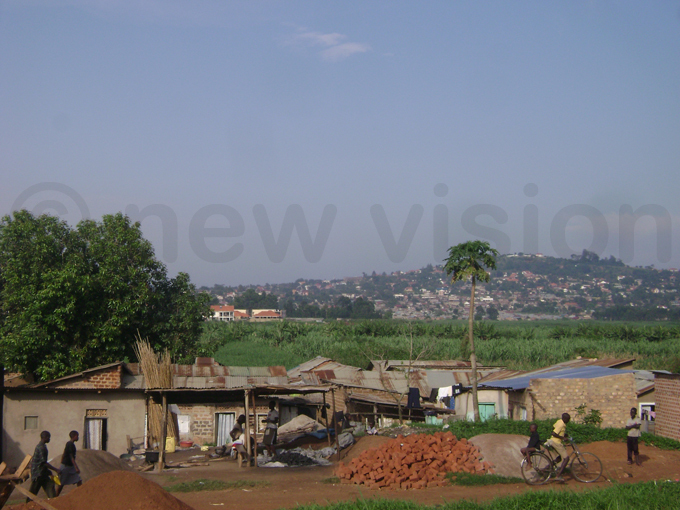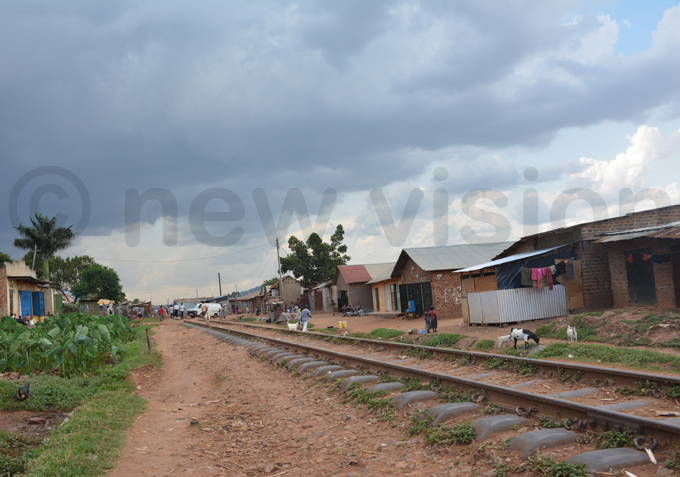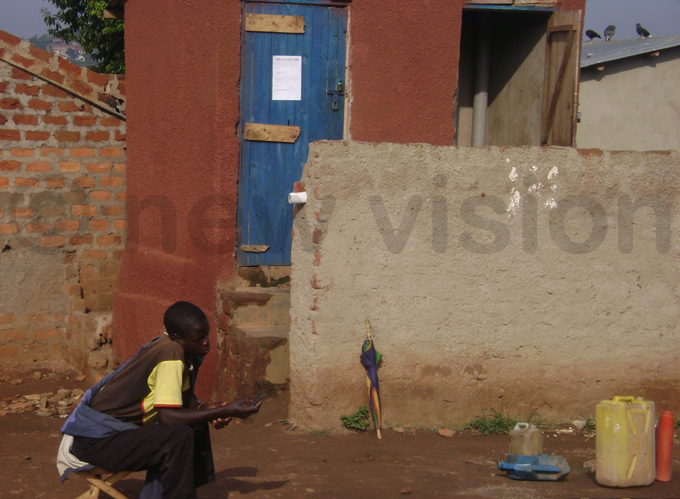The Dirty Truth: 40,000 people in Kampala without toilets
Sep 15, 2016
36% of the population in Kampala does not have drainable pit-latrines for safe removal of faeces by cesspool emptier and treatment

The flies take off and land like helicopters. The name of the ‘airstrip' is Kanyogoga below Muyenga in Kampala and because of the buzzing sound of the flies in the air it is similar to a military air base.
Kanyogoga is one of the places in Kampala with the fewest toilets yet it has a big population. The residents answer their call of nature either in the dark tiny alleys or along the streams. Others have resorted to the use of kaveera (plastic bags) which they pack with human excreta and discard at night into the outside environment.
The saying, ‘look before you leap' applies for every next step you take at Kanyogoga. As I walked, I kept on dodging fresh steaming litter. This was similar to driving on a pot holed road. It was not only my eyes that were working extra time but also my noise battled an offensive smell wafting through the air. I held my breath several times but this did not help.
A flood of questions clogged my mind. How do people manage to live in this part of the world? How do they bring up their children? How do girls handle menstruation periods without toilets and bath rooms and proper shelter? What are the leaders doing about the pathetic state of affairs at Kanyogoga?
Massy Nakayima, who stays in a well-drained area of Kololo in Kampala, shared her unpleasant feelings when she answered a call of nature in a shared pit-latrine at Kanyogoga.
"I have never been to such a dirty toilet," says Nakayima, a resident of Kololo. "I feel like not touching my shoes again."
As Nakayima stared into the face of deprivation where people stay at the edge of life in Kampala's swampy areas that have been reclaimed and along the railway reserves, the residents at Kanyogoga did not seem bothered. But they are hiding a lot of pain and suffering, which becomes evident when they open up. This was the case last Saturday.
 Kanyogoga slum below Muyenga Hill. Photo by Gerald Tenywa
Kanyogoga slum below Muyenga Hill. Photo by Gerald Tenywa
"Who does not want to stay in a place that is well drained?" asked Moses Matovu, adding that people have been pushed to stay in overcrowded areas of the city.
"If I had enough money, I would stay in Kololo or Nakasero where you never see pupu after putting it where it supposed to go in the flush toilet," he points out.
In well planned areas of Kampala, answering the call of nature is not a big deal. In my case, the landlord collects money for rent but he has taken construction of a toilet as a priority.
Matovu's wife, Mary Apolot, who is a mother of three, says their problems are endless. "It is not an easy thing to get food and water. But even when we get food and water, there is another burden of buying access to a shared public toilet.
"It is costly for the poor people to buy our way to the toilet," she says and that at night the toilet is shut down, forcing people to use plastic bags where they empty the waste and then throw them out.
According to Mukama, the hygiene and sanitation expert in the Ministry of Health, 98% of Kampala's population has access to sanitation facilities, but two percent of the population (40,000) practice open defecation. He says most of the people who practice open defecation are slums of Kampala such as Kanyogoga.
In addition, 36% of the population in Kampala does not have drainable pit-latrines for safe removal of faeces by cesspool emptiers and treatment. This means that when it rains the pit-latrines get flooded and the faecal matter is swept away. In some cases, pit-latrines that have become full are unplugged to release all their waste into the surrounding areas such as residences, streams and water sources.
 A railway line connecting Kampala City to Port Bell running through Kanyogoga slum. Photo by Gerald Tenywa
A railway line connecting Kampala City to Port Bell running through Kanyogoga slum. Photo by Gerald Tenywa
"Contamination of water and food or what we call oral mouth contamination become inevitable," said Mukama, adding that the people practicing open defecation and without drainable pit-latrines pose a big threat to the health of the city population.
The repeated cases of cholera, according to Mukama, have been reported in over-crowded places where low-income earners stay. Kanyogoga, according to statistics from Kampala Capital City Authority (KCCA), has been hit by cholera three times within the last 10 years.
Other places of Kampala where cholera has been reported previously include Kifumbira in Kamwokya, Kalerwe and Bwaise. The weather reports released by the Ministry of Water and Environment for the last two decades keep warning of possible outbreaks of cholera.
Uganda loses sh389b annually
About 30% of Ugandans, over three million people, do not have toilets in Uganda, according to Engineer Aaron Mwidu Kabirizi in the Ministry of Water and Environment.
The disease burden resulting from poor sanitation costs Uganda sh389b every year, according to a report of the World Bank. In addition poor sanitation is contributing to loss of productive time. The sick people are not able to work and mothers have to spend productive time looking after their sick children.
Poor sanitation blocks 2020 middle income status
While Uganda is working to attain the lower end of a middle income economy by 2020, Jane Nabunya, a water and sanitation advocate warns that this is likely to remain a pipeline dream if addressing water and sanitation challenges are not addressed.
 An attendant watching over a shared public toilet in Kanyogoga slum. Photo by Gerald Tenywa
An attendant watching over a shared public toilet in Kanyogoga slum. Photo by Gerald Tenywa
"You can't be dreaming of becoming a middle income country by 2020 when people are still practicing open defecation," she said, adding that funding to the water and sanitation sector has been declining yet the population in rising. "We need water and sanitation for all if we are going to achieve sustainable development in Uganda."
Solution to the problems
Currently, the population of Kampala that is connected to public sewer systems is estimated at only 6%, according to Samuel Apedel, the communications manager at NWSC. He says this is going to increase to about 10% after the construction of Lubigi sewer system. He also pointed out that construction of another public sewer system is in the pipeline at Kinawataka.
Mukama agrees with Apedel that expansion of the public sewer system is part of the solution. "We need NWSC to connect more people at an affordable price," says Mukama, who was previously working in the Ministry of Water and Environment until last year.
He also points out that there is a need to enhance awareness within Kampala about drainable pit-latrines and treatment of waste matter that could be treated into useful products such as manure. He also said washing hands with soap after using a toilet and maintaining good hygiene is essential.
 Part of Kanyogoga slum where a waste treatment plant is to be constructed by National Water and Sewerage Corporation. Photo by Gerald Tenywa
Part of Kanyogoga slum where a waste treatment plant is to be constructed by National Water and Sewerage Corporation. Photo by Gerald Tenywa
KCCA is waking up to take its place in running the affairs of Kampala but it needs to step up its actions against landlords who do not consider construction of pit-latrines as a priority. "We need KCCA to prosecute landlords who do not construct pit-latrines," said Mukama, adding that KCCA should block occupancy of such houses.
Mukama also added: "Councilors and LCs should also do their work by mobilising the people to demand for action on water and sanitation."
As I left Kanyogoga, the clouds were gathering over Kampala. This could be seen as a blessing by some people because it will help to wash away some of the dust on the buildings. But the rain season could provide a fertile ground for the germs in the overflowing toilets to breed and wreak havoc on the slum dwellers.
